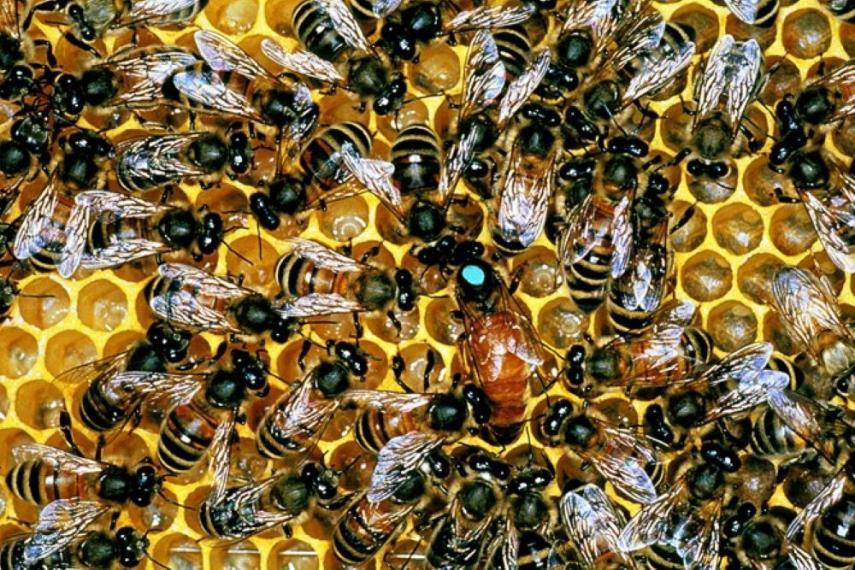Buzzworthy Math

Using math to uncover honeybee disease dynamics and protect these important pollinators.
Beyond providing a sweet spread for our morning toast, honeybees are important pollinators that play a crucial role in the health of the Earth’s natural ecosystems. Sadly, honeybee populations are under threat due to microorganisms that cause disease (pathogens). Nosema ceranae, one such fungal pathogen, can cause reduced population numbers, lower pollination, and even complete hive collapse. It is crucial to understand how diseases spread and impact honeybee populations.
U of G Mathematics and Statistics professor Hermann Eberl along with Nasim Muhammad, a former PhD graduate from U of G who is now at McMaster University, leveraged mathematical models to understand disease dynamics in honeybee colonies. The inner workings of a honeybee hive are fascinatingly complex, but notoriously difficult to study in the field. Honeybees are highly social and live in organized, cooperative colonies with distinct divisions of labour. Adding another layer—disease transmission—to this already complex scenario makes real-world experiments difficult to control and repeat. Eberl and Muhammad developed mathematical models and ran computer simulations to qualitatively compare what happens in a bee population under two different disease transmission scenarios.
One scenario examined disease spread via bee-to-bee (direct) transmission and the second involved fecal particles passing from one individual to the mouth of another (indirect transmission). The model accounts for seasonal variations in honeybee biology and considers hive and forager bees separately. The researchers simulated the spread of N. ceranae over several years and found that both direct and indirect transmission can result in the disease fading out if the rate of transmission is low. If transmission rates are high, both direct and indirect transmission can lead to colony failure after a few years. For a broad range of intermediate direct transmission rates, the disease is endemic—the pathogen is firmly established in a weakened colony. The research also suggests that under direct transmission, the disease spread can in some cases be chaotic, meaning irregular and unpredictable.
“This study provides a nuanced picture of disease transmission in honeybees,” explains Eberl. “Our models could be extended to integrate the impact of preventative strategies, which could shed light on which remediation methods could be effective.”
This work was supported by the Shared Hierarchical Academic Research Computing Network (SHARCNET).
Muhammad N, Eberl HJ. Two routes of transmission for Nosema infections in a honeybee population model with polyethism and time-periodic parameters can lead to drastically different qualitative model behavior. Commun Nonlinear Sci Numer Simul. 2020 May 1. doi: 10.1016/j.cnsns.2020.105207.